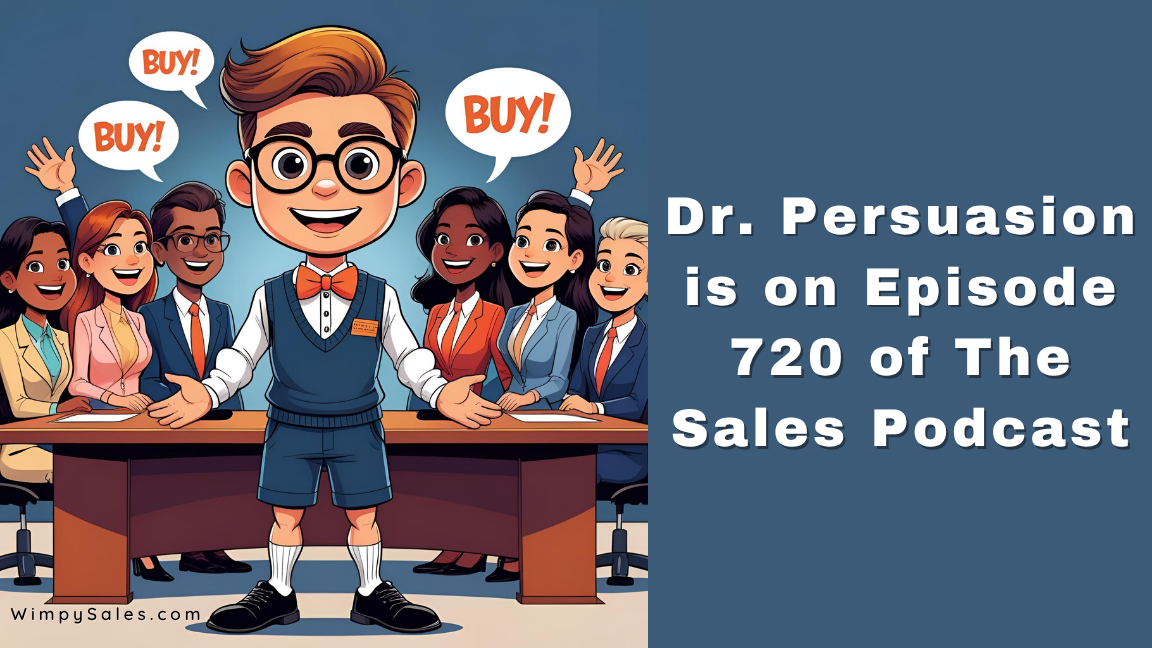
Sales Enablement: Creating a Revenue Goal

How To Align Your Sales and Marketing Teams Around a Unified Revenue Goal
In the first article on Sales Enablement, I discussed the differences between inbound marketing, inbound selling, and sales enablement, along with the need for sales and marketing to start singing—and selling—from the same sheet of music.
To make that happen I recommend you create Revenue Teams comprised of personnel from both sales and marketing to achieve—wait for it...wait for it—synergy. (Dang! I said it. I'm sorry. But the word fits.)
Selling is aggressive and action-oriented, while marketing thinks more in terms of systems, processes, and analytics.
Bring the two together correctly, and great things can happen.
But "correctly" is a big word in this case.
To grow your business, your marketing and sales teams must agree on what success looks like.
So, let's take a look at how to create a revenue goal that will motivate your newly formed teams and get them working in the same direction.
Topics
- Visions
- Goals
Videos
- The Importance of Having a Vision and Setting Goals (4:41)
- Creating a Revenue Goal (4:30)
- Must be able to communicate the vision in a matter of minutes and it must be both understood and interesting.
- Are they achievable?
- Sales enablement empowers your sales team to accomplish things that would otherwise be impossible
- Can feel arbitrary if not tied to something more concrete
- Craft a vision that marketing and sales can both get excited about
- Calculate how much that vision will cost to achieve
Quiz Yourself
- What’s the difference between a vision and goals?
- Ensure you’re on the path that has the potential to fulfill your vision.
- “Real transformation takes time, and it risks losing momentum if there are no short-term goals to meet and celebrate.” John Kotter, “Leading Change: Why Transformation Efforts Fail”
- Goal: a metric outcome you can check off a list
- Vision: is what’s going to motivate your team
- A goal is a metric outcome you can check off a list, and a vision is a state of affairs you want to bring into being.
- Why is it important to translate your vision into revenue? Once you have a vision, you need to convert it into a revenue goal.
- Should marketing and sales have separate revenue goals? No.
- Your goals should encourage your teams to accomplish things they've never done before, but they shouldn't be so lofty that they make team members feel overwhelmed.
Back in the day—2001, to be precise—I bought myself a Blackberry when I was working for a fiber optic testing company that was headquartered out of Utica, NY.
Being a small company—and leveraging my knowhow of how to Make Every Sale combined with a healthy dose of Southern Charm (and humility)—I sweet-talked the IT department into BCCing all of my company emails to my Blackberry email address so I could read and reply to emails while on the road, which was 40-60% of the time.

As a result, I was more responsive not only to my prospects and clients but to my internal company contacts as well, which helped me make more sales and more money.
This is what sales enablement looked like in 2001.
Fast-forward to 2004, and I'm with a startup out of Austin, TX, which deployed Salesforce.com right after I joined.
Having used other CRMs like Siebel, Onyx, Act!, and homegrown tools in the financial services and retail sectors, not to mention the personnel database I ran in the Air Force to handle our deployments to the Middle East in 1994 and 1995, I was not only comfortable switching to Salesforce.com, I was looking forward to it.
"Wes, you were happy to switch to a CRM as a W-2 salesperson? What is wrong with you?

Yes, I was excited to move to Salesforce for a few reasons:
- I had nothing to hide from "big brother."
- I had my ducks in a row.
- I was (and am) a fan of THE RIGHT sales enablement technology.
- I knew if I mastered Salesforce while the other salespeople complained about it, they'd be under the gun from Big Brother, which meant I'd be free to roam about my territory and sell while they filled out spreadsheets and did pipeline reviews.
Little did I know that I was already applying inbound sales and inbound marketing to grow my sales as a quota-carrying, high-tech sales pro back then.
It would also be more than a decade before I heard the phrase "sales enablement," but great salespeople do their own sales enablement as a matter of course.
We are always looking for ways to shorten sales cycles, cut out redundant, tedious, non-selling work, and hit the bar!
To make that happen at the top of the funnel or the beginning of the pipeline, we need to get qualified leads to call or contact us because then you are negotiating from a position of strength.
"Oh, you don't like my price? Well you know my price because it's published on my site but you still called me. So are you just trying to drive a hard bargain?"
"Oh, ACME, Inc. has a better service? Then why did you call me if you knew that already?"
To make that happen, you need to create marketing and sales that people love.
THAT'S inbound marketing and inbound selling.
Sure, cold calling works, and trade show marketing works, and sign twirlers on the street corner work...heck, EVERYTHING can work once, even shouting out of your office window and offering a deal to anyone within earshot.
But inbound marketing is how you, the business owner, can use the internet to your advantage.
When you provide helpful content and resources that attract your ideal prospects to you, you're doing inbound marketing, which leads to inbound selling, which leads to the need for sales enablement.
Sales and marketing align
Look, just because someone called you or filled out a Contact Us form doesn't mean they will buy from you.
Sure, the chances are much higher than if you cold-called them, but it's still not a done deal.
However, when you do hear from a qualified lead, here's what has happened behind the scenes, according to Tracy Eiler and Andrea Austin in Aligned to Achieve: How to Unite Your Sales and Marketing Teams into a Single Force for Growth:
- 70% of a buyer’s research is done before they talk to sales
- 59% of buyers prefer not to talk to sales at all
In most companies—yours included—marketing and sales don’t get along.
Let me know if this sounds familiar.
Your marketing team loves rules, analytics, and detailed reporting, they think long-term and want things to work.
Meanwhile, your salespeople are opportunistic, "coin-operated," think short-term (because you're riding their butts in the weekly "sales meeting" that is really just a brow-beating session where the motto is "The beatings will continue until morale improves!), and your most aggressive, foot-in-the-door, get-it-done, don't-take-no-for-an-answer salespeople don’t believe in rules, or at least they think the rules don't apply to them.
Sales and marketing are like oil and water.
They weren't created built to work together...which is where sales enablement comes into play.
Sales enablement is a big group hug for sales and marketing
According to HubSpot, sales enablement is the processes, content, and technology that empower sales teams to sell efficiently at a higher velocity. (I bolded that because salespeople despise tedious, redundant work, and we all know that time kills deals, so let's git 'r done.)
Since the sales team wants to sell efficiently at a higher velocity, they take ownership of sales enablement.
According to Highspot's "State of Sales Enablement Report 2024," seller productivity is a key business result, with 54% of executives focused on improving sales productivity this year, but with organizations using nearly 10 tools on average to support their sales efforts, resistance is high.
But we know that the salespeople are not fans of rules, analytics, and reporting like the marketing team is.
Can you see the problem?
Marketing has the skillset for the job of building out a killer sales enablement program, and it owns the relationship with 70% of your prospects who are doing their own homework and research prior to engaging with your sales team.
So, like it or not—admit it or not—marketing has a growing influence on your sales and is impacting them in ways you may not even realize.
So, instead of calling your teams sales and marketing, you might want to consider calling them “revenue teams.” After all, more and more companies are bringing on CROs—Chief Revenue Officers—so why not create revenue teams to tie your inbound sales to your inbound marketing to your sales enablement to actually enable sales?
To reach and connect with today's empowered buyer is probably a good idea, even if I say so myself.
Three elements of a sales enablement strategy
Now that we all agree that sales and marketing need to get on the same page to create this third leg of your sales excellence program let's take a closer look at what a good sales enablement strategy looks like.
Clear goal
It doesn't take a rocket surgeon to know that goals are important, but salespeople usually have one goal: sell a bunch...and maybe a second goal: make a lot of money.
This is why it's good to have your marketing team help the sales team—now the Revenue Team—create a single goal for the new, single team, and this goal needs to be revenue-focused.
Once you've come to an agreement on the revenue goal you can better analyze your processes, content, and technology to answer the question "does this process, content, and technology help us hit our team revenue goal?"
Target the buyer
Now that you have a revenue target, how will you achieve it?
"Why Wes, we're going to work smarter, not harder!"
Well, using a power drill to poke a hole in your wall to hang a mirror is smarter than using a handheld screwdriver...but what if you didn't listen to your wife and you hung the mirror on the wrong wall...or you missed the stud and have to drill again...or you didn't use a level to drill the holes for the two hooks you needed and now the mirror is tilting to one side?
"That's a good point, Wes. That's why we're going to work harder!"
That's swell.
So you'll have everyone come to the office 30 minutes earlier, cut the lunch break down from one hour to 30 minutes, and have them stay 30 minutes later each day?
Maybe work half a day on Saturday?
How about coming in an hour earlier each day as well?
There are only so many hours in the day, and people shouldn't feel as though they have to give up their lives to get a job.
"Wes, we're not like that. We're family here at ACME Tech Associates Ltd, Group Inc., so we're going to be more productive! That's how we're going to hit that big new revenue goal."
Great.
So you'll give cordless drills and extra batteries so they can all drill holes faster?
At the end of the day, the entire purpose of merging inbound marketing with inbound selling to create an optimum sales enablement is to maximize the time your salespeople spend with people more likely to buy and minimize the amount of time they spend with those who are not likely to buy.
Content strategy
Inbound Marketing = Content
Inbound Selling = Content + Engagement
Sales Enablement = Getting The Right Content To The Right Prospects Quickly and Easily So It Gets There At The Right Time
To make it so curious prospects find you and become qualified leads who voluntarily provide their correct contact information in exchange for more valuable content requires great content.
But great content varies along the buyer's journey.
Send the wrong information at the wrong time with incorrect calls to action or assumptions, and the prospect will be a "gone pecan."
This happens with marketers working in a silo isolated from sales using marketing language that is like nails on a chalkboard with prospects.
"Well Wes, where do we get great content for sales enablement? salespeople aren't content producers!"
Wanna bet?
For years, I've been telling salespeople that they are sitting on a gold mine.
It's in their SENT FOLDER in their email client, i.e., Outlook, Gmail, etc.
Every question sales have ever answered is content; they just don’t call it that.
Every comparison they've created, every objection they've overcome, every tutorial or guide they've pieced together to help a client or prospect over a hurdle is content.
So if the systems-oriented, rule-following, analytics-tracking marketing team can join forces with the relevant/timely content-creating team, formerly known as the sales team, to create the new and improved revenue team to bring about this secret weapon known as sales enablement, the world will become your oyster.
Measuring marketing effectiveness on pipeline creation and routine contribution is great but hard to do. It’s easier to count the number of leads. But if you can do it with a revenue lens, a metric lens, with sales, they are the first to understand that marketing and sales can be aligned and that’s great.“ ~Bertrand Hazard, VP Marketing, TrustRadius
Sales enablement conclusion
Deploying a sales enablement model in your business is easy.
- Treat the sales team as though they are part of the marketing team and/or consider creating a new revenue team comprised of members of both.
- Detach and look at your current sales process with a critical eye to see what is working and where there are gaps.
- Perfect your sales process and ensure it is centered around the Buyer’s Journey. For example, it may look like
- MQL (Marketing Qualified Lead)
- Sales Accepted
- Sales Qualified
- Pipeline from Marketing
- Pipeline from Sales
- Trust but verify that leads are being properly managed and transferred between the various marketing and sales processes so no leads are lost.
Create an SLA (Service Level Agreement) between marketing and sales (if you don't create a new revenue team) so everyone is clear on how they are being measured and what is expected of them.
And that's what sales enablement is, what it looks like, how to create it, and how to grow with it.
If you'd like to discuss how my team and I can help you leverage sales enablement in your business, please contact me here.
Now go sell something.



